This is very useful service for the clients in case a large amount of data cannot be accessed over the network from their storage account. Azure gives an option to its clients that they can put their data on a hard drive and ship them to Azure datacenters. That data is then uploaded to their storage account. Similarly, if data is needed to be downloaded by the client that is not viable to do over the network, they can ship an empty hard drive to the datacenter and Azure team will copy the data to that drive and ship it back to the client. In both cases, the data is encrypted.
Data Export Job
Let’s assume you have a large amount data in your Azure storage account and you want a copy of that data.
Create an Export Job
In this process, you will be given a shipping address, to where the empty hard drives needs to be shipped.
Step 1 − Login to Azure management portal and select the ‘Storage’ from the left panel.
Step 2 − Select the storage account.
Step 3 − Click ‘Import/Export’ from the top menu.
Step 4 − Create ‘Export Job’.
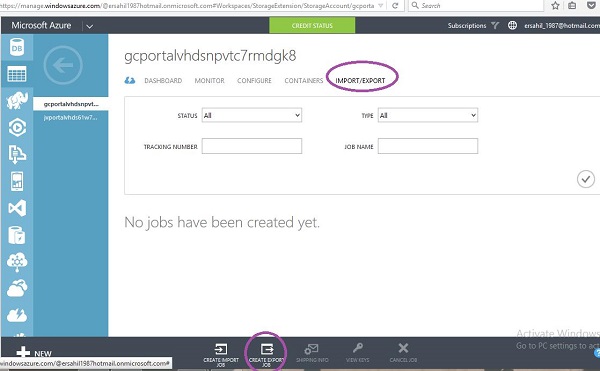
The following screen will pop up.
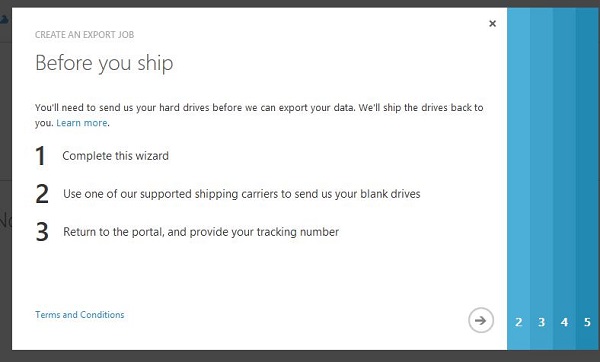
Step 5 − On clicking the next arrow, you will see the following screen, where you will have to provide your contact and shipping details.
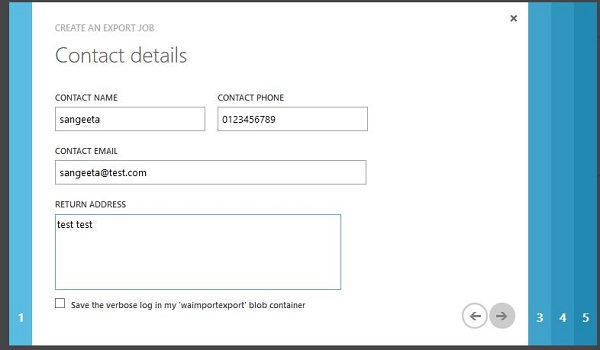
Step 6 − In the next screen, you will have to select the Blob Data you want to export. You can specify the path or choose to export all blob data from the storage account.
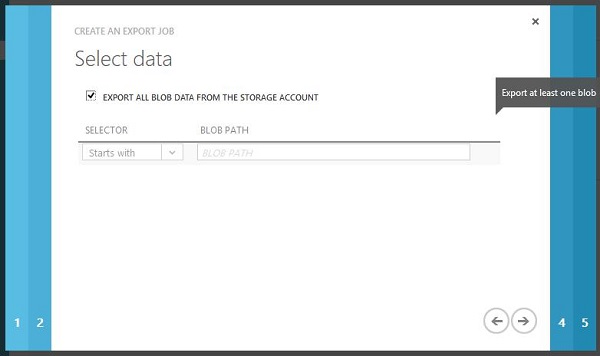
Step 7 − Enter a name for job in lower case letters. Address you can see here is the address where the hard drives is to be shipped. This address is based on the location of my storage account.
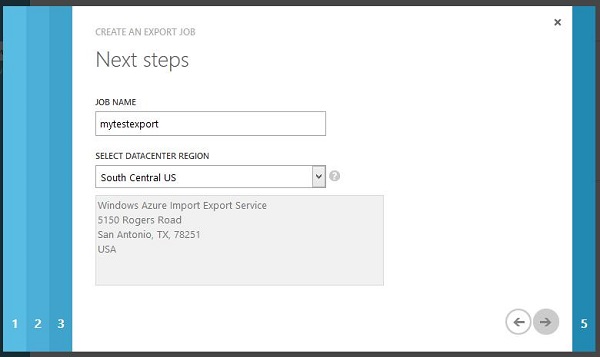
Step 8 − In the next step, you will have to provide the shipping details of the hard drive for delivery to datacenter and return to your location.
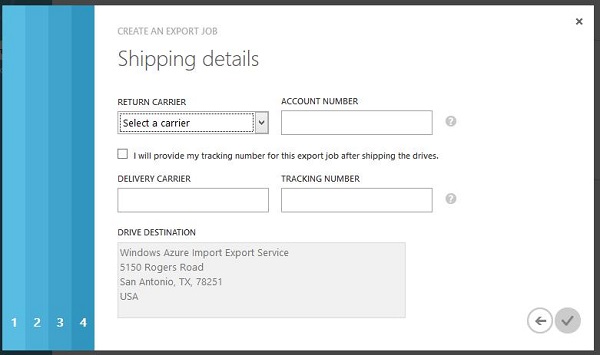
Step 9 − Click next and you are done.
Hard Drives to Be Shipped
In order to determine how many hard drives you need for the Blob data, you will have to use Microsoft Azure Import/Export Tool. You will have to download and install this tool on your machine. Only 3.5 inch SATA hard drive I/II are up to 6TB supported.
Ship the Hard Drives
You need to ship the hard drives to the shipping address obtained while creating the export job. Then you need to come back to the management portal to enter the tracking number, in case you chose to provide the tracking number after shipping in the screen above.
Decrypt the Data
You will have to enter the decryption key before reading the data on hard drives. You can get the decryption key from your management portal by selecting the job name.
Data Import Job
If you want to store the large amount of data to your storage account, you can do so by saving it on the hard drive and shipping it to the datacenter.
Prepare the Hard Drives
You will have to use Microsoft Azure Import/Export Tool to prepare the hard drives. As mentioned in earlier section, the only 3.5 inches SATA hard drives are supported for this purpose. This process will create a drive journal file that you will need while creating the import job in management portal. The journal file will be saved on your computer.
Create Import job
Step 1 − Login into the management portal and go to the storage account.
Step 2 − Select ‘import/export’ at the bottom of the screen.
Step 3 − Select ‘Create Import Job’.
Step 4 − Check the checkbox and click Next.
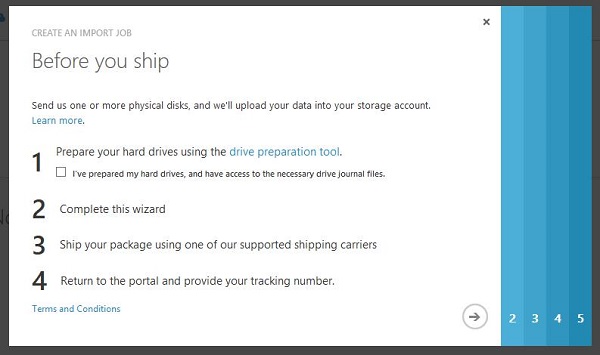
Step 5 − In the next screen, provide the contact details of the return shipping address. Enter the details and click Next.
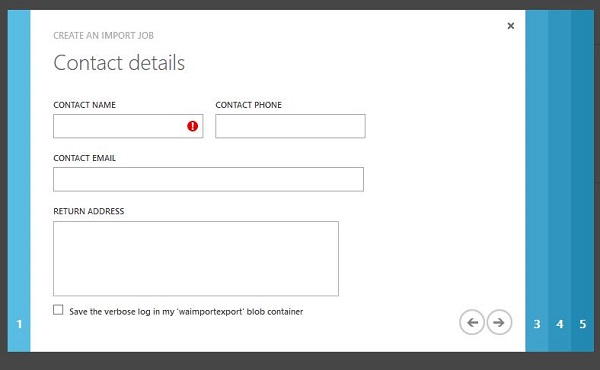
Step 6 − Upload the Drive Journal File that was created while preparing the hard drive.
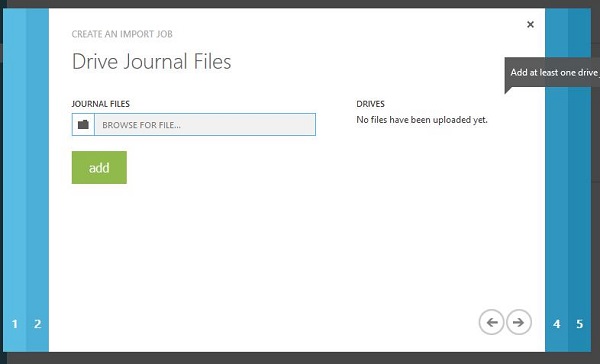
Step 7 − Enter the name for import job.
Step 8 − Enter the shipping details for the delivery of hard drives to the datacenter and return to your location.
Ship the Hard Drives to the Datacenter
Ship the hard drive to the address obtained while creating import job in the management portal. Enter the shipping tracking number for the job in the management portal in order to complete the job.
I found one successful example of this truth through this blog. I am going to use such information now.
ReplyDeletePL-400T00-AC: Microsoft Power Platform Developer